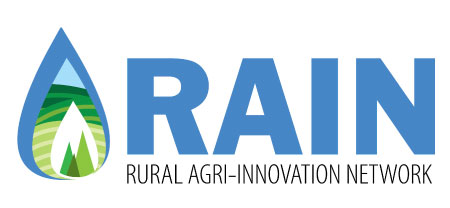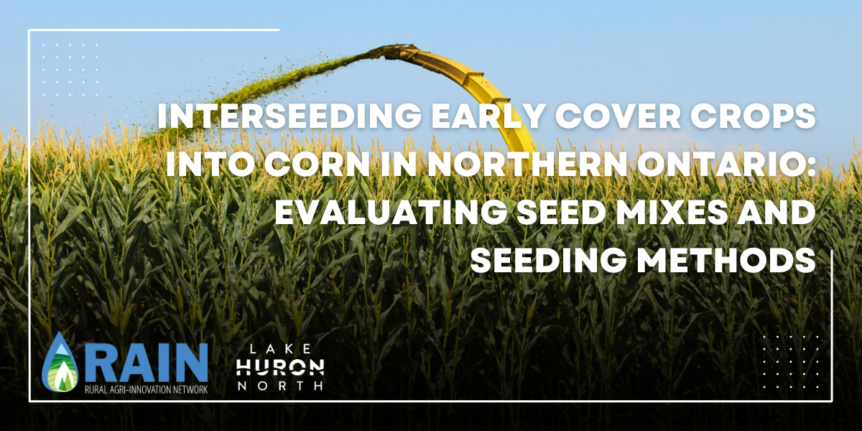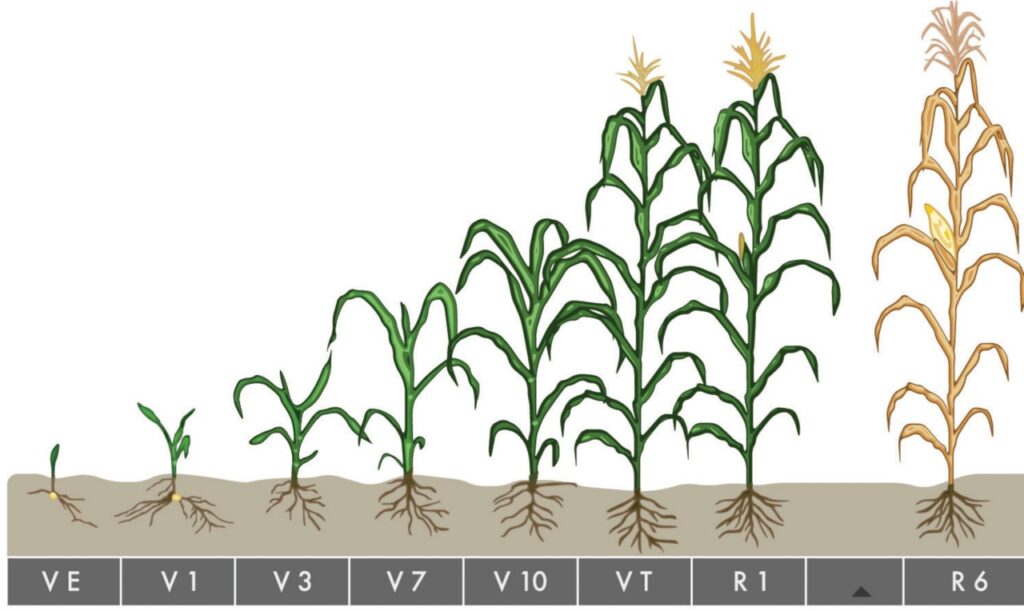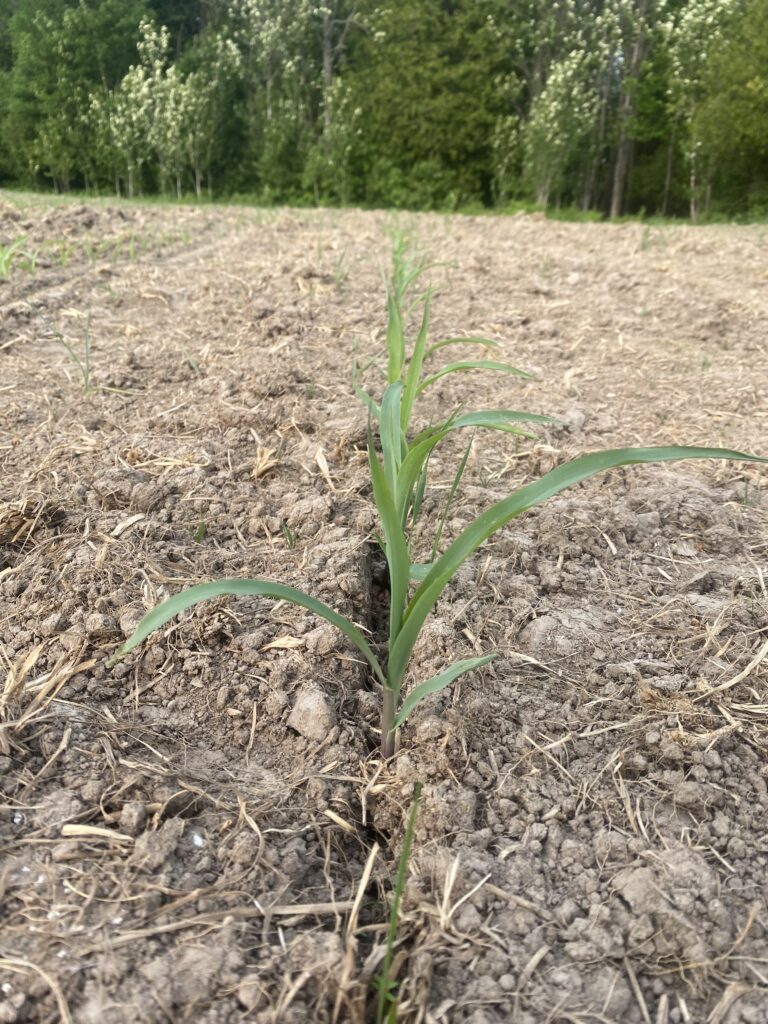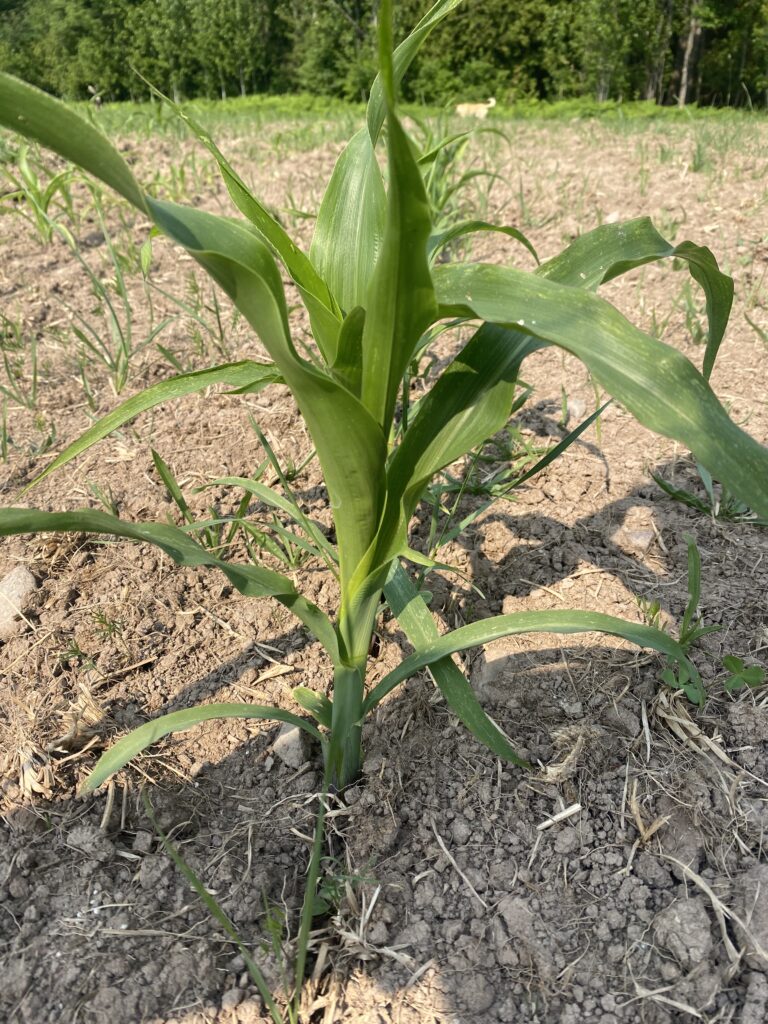The Challenge- What if you could turn the challenge of Northern Ontario’s short growing season into an opportunity for optimizing cover crop integration? That’s what RAIN’s new research project aims to achieve. This project will investigate the potential of interseeding early cover crops into silage corn in northern Ontario, where conventional cover crops are often limited due to the short growing season and colder temperatures.
This study will focus on evaluating two different seed mixes and three different seeding methods for their effects on ground coverage, weed pressure, and yield. One of the main reasons we chose to conduct this research project is to show all the environmental benefits that can come with cover cropping. We hope to show the easiest and most cost-effective way of cover cropping with corn, in hopes that more producers are willing to give cover cropping a try.
Seeding Mix- Seed mixes will include double cut red clover and annual ryegrass (Mix 1) and a combination of double cut red clover, annual ryegrass, and tillage radish (Mix 2).
Trial Design- Seeding methods will consist of broadcasting, a modified grain drill, and a modified no-till drill. By modifying the grain and no till drill, we are removing the discs that would run over top of the corn rows. Ensuring that the seed is only planted between the rows and that the corn is not damaged. The trial will be laid out in a split block design, with corn planted at the optimal time and fertilized as a conventional crop. Below is an example of a split block design, as well as how the trial is laid out in Algoma (St. Joseph Island).
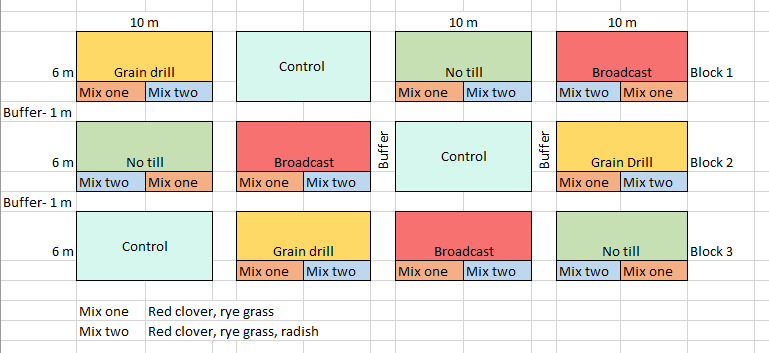
Monitoring and Outcome– At the V4-V7 stage (see the diagram below), interseeding will be conducted using the three seeding methods for each seed mix. Corn will be harvested at the optimal time, and the underseeded crop will be allowed to grow for the remainder of the season. Plots will be monitored for weed pressure and progress throughout the season. At the end of the season, yield, ground coverage, and weed pressure of the underseeded crop will be recorded. This research will contribute valuable insights into optimizing interseeding cover crops into corn in northern Ontario, providing potential benefits such as erosion control, increased soil organic matter, improved water infiltration, weed control, and enhanced microbial activity.
Milestones so far- The plot of corn was planted and fertilized on May 21st, 2023. While we had a hot and hazy June, we were relieved to have the rainfall. The corn was sprayed for weeds and another fertilization of nitrogen was applied on June 26th, 2023. The cover crop mixes will be planted in the next week or so.
We hope that this project will be an opportunity for Northern producers to consider cover crop integration given the wide range of variables they need to consider (i.e. climate, seeding methods, and seed mix options). The project may produce some optimal conditions we are looking forward to sharing. Let us know what you think by leaving a comment or a question!
Do you want to read more about integrating early cover crops into corn? Check out this OMAFRA article that covers the topic.
